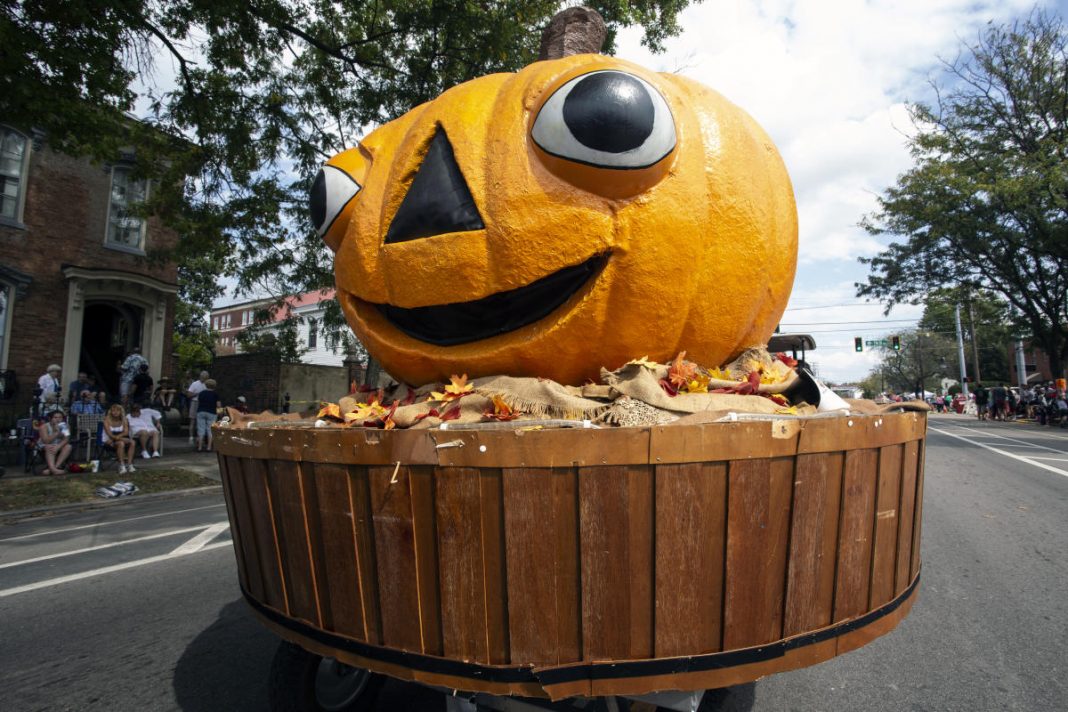The Fall 2022 issue of Food & Dining Magazine (#75) is now available in all the familiar places: Louisville area eateries and food shops, newsstands and online. Go here for a preview of the features, profiles and columns, with links to the new edition at issuu.
Harvest Homecoming is like a tail that wags New Albany’s civic dog, and while the 53-year-old annual festival promotes numerous events throughout the city, in the minds of the fest-going public it’s all about “booth days,” when streets are closed in the epicenter of downtown and throngs descend to patronize booths occupied by a diverse array of vendors, with those of the edible and potable variety usually the most avidly discussed.
Booth days begin on Thursday 6 October and run through Sunday 9 October.
The past decade has seen a gradual but very real evolution in the festival, as impelled by the rejuvenation of downtown New Albany. For decades there was little in the way of commercial presence for Harvest Homecoming to displace during booth days. Nowadays there are eateries, bars and retail shops, and so thinking “behind the booths” has become as important a mantra as the wares being displayed between the curbs.
Food remains an enduring focus of Harvest Homecoming; after all, “harvest” never was meant to imply silkworms or lumbering.
When the event was young, the sort of roving victuals purveyor common to small fairs and celebrations was almost unknown. Churches, social clubs and civic organizations prepared Southern Indiana staples — doughnuts, fired mushrooms, persimmon pudding, rolled oysters, pork chops, chocolate-covered frozen bananas (!)—and put the proceeds toward their everyday programs of good works.
Unfortunately as time passed the Harvest Homecoming booth days dining scene shifted away from these local grassroots cooks to the now common, for-profit professional fair and event operators. Part of it was more mouths to feed, with the original generation of once-yearly caterers lacking the means to keep pace. The old-timers aged, youth wasn’t as receptive to the notion of preparing chili for 20,000 of their closest friends, and health department regulations became more demanding.
Readers might question why any of this matters, but using Harvest Homecoming as a point of context, I’d suggest that economic localization certainly does matter. No one wants to see longtime local “fest food” go away; it defines who we are, and as for those professional food trucks from Keokuk, the money they make is taken elsewhere.
Harvest Homecoming began highly localized; the spending it generated recirculated inside the community. New Albany’s downtown food and dining segment, which exists year-round “behind” those temporary booths, also recirculates a higher percentage of proceeds locally, and actually help to bring Harvest Homecoming’s metaphorical table full-circle, all the way back to its roots.
As a closing thought, in 2021 chicken and dumplings suddenly became highly symbolic in this precise fashion of re-localization, and it is rumored that there’ll be a recurrence this year at The Exchange
We can only hope. Elephant ears come and go, but the community itself endures.
The Exchange brings the Red Men’s signature chicken and dumplings back to Harvest Homecoming






















